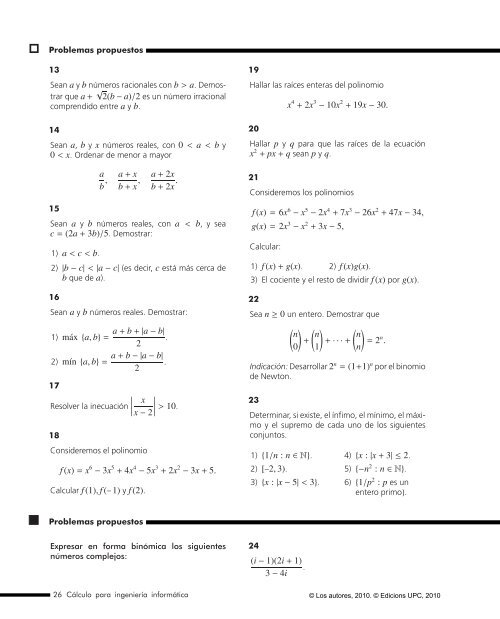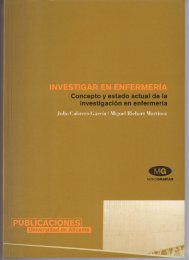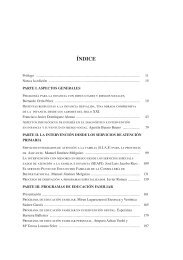1 Números reales y complejos - e-BUC
1 Números reales y complejos - e-BUC
1 Números reales y complejos - e-BUC
You also want an ePaper? Increase the reach of your titles
YUMPU automatically turns print PDFs into web optimized ePapers that Google loves.
Problemas propuestos<br />
13<br />
Sean a y b números racionales con b > a. Demostrar<br />
que a + √ 2(b − a)/2 es un número irracional<br />
comprendido entre a y b.<br />
14<br />
Sean a, b y x números <strong>reales</strong>, con 0 < a < b y<br />
0 < x. Ordenar de menor a mayor<br />
19<br />
Hallar las raíces enteras del polinomio<br />
20<br />
x 4 + 2x 3 − 10x 2 + 19x − 30.<br />
Hallar p y q para que las raíces de la ecuación<br />
x 2 + px + q sean p y q.<br />
a<br />
b ,<br />
a + x<br />
b + x ,<br />
a + 2x<br />
b + 2x .<br />
21<br />
Consideremos los polinomios<br />
15<br />
Sean a y b números <strong>reales</strong>, con a < b, ysea<br />
c = (2a + 3b)/5. Demostrar:<br />
1) a < c < b.<br />
2) |b − c| < |a − c| (es decir, c está más cerca de<br />
b que de a).<br />
16<br />
Sean a y b números <strong>reales</strong>. Demostrar:<br />
a + b + |a − b|<br />
1) máx {a, b} = .<br />
2<br />
a + b −|a − b|<br />
2) mín {a, b} = .<br />
2<br />
17<br />
x<br />
Resolver la inecuación<br />
∣<br />
x − 2∣ > 10.<br />
18<br />
Consideremos el polinomio<br />
f (x) = x 6 − 3x 5 + 4x 4 − 5x 3 + 2x 2 − 3x + 5.<br />
Calcular f (1), f (– 1) y f (2).<br />
f (x) = 6x 6 − x 5 − 2x 4 + 7x 3 − 26x 2 + 47x − 34,<br />
g(x) = 2x 3 − x 2 + 3x − 5,<br />
Calcular:<br />
1) f (x) + g(x). 2) f (x)g(x).<br />
3) El cociente y el resto de dividir f (x) por g(x).<br />
22<br />
Sea n ≥ 0 un entero. Demostrar que<br />
( ( ( n n n<br />
+ + ···+ = 2<br />
0)<br />
1)<br />
n)<br />
n .<br />
Indicación: Desarrollar 2 n = (1+1) n por el binomio<br />
de Newton.<br />
23<br />
Determinar, si existe, el ínfimo, el mínimo, el máximo<br />
y el supremo de cada uno de los siguientes<br />
conjuntos.<br />
1) {1/n : n ∈ N}.<br />
2) [–2, 3).<br />
3) {x : |x − 5| < 3}.<br />
4) {x : |x + 3| ≤2.<br />
5) {−n 2 : n ∈ N}.<br />
6) {1/p 2 : p es un<br />
entero primo}.<br />
Problemas propuestos<br />
Expresar en forma binómica los siguientes<br />
números <strong>complejos</strong>:<br />
24<br />
(i − 1)(2i + 1)<br />
.<br />
3 − 4i<br />
261Cálculo para ingeniería informática © Los autores, 2010. © Edicions UPC, 2010

















